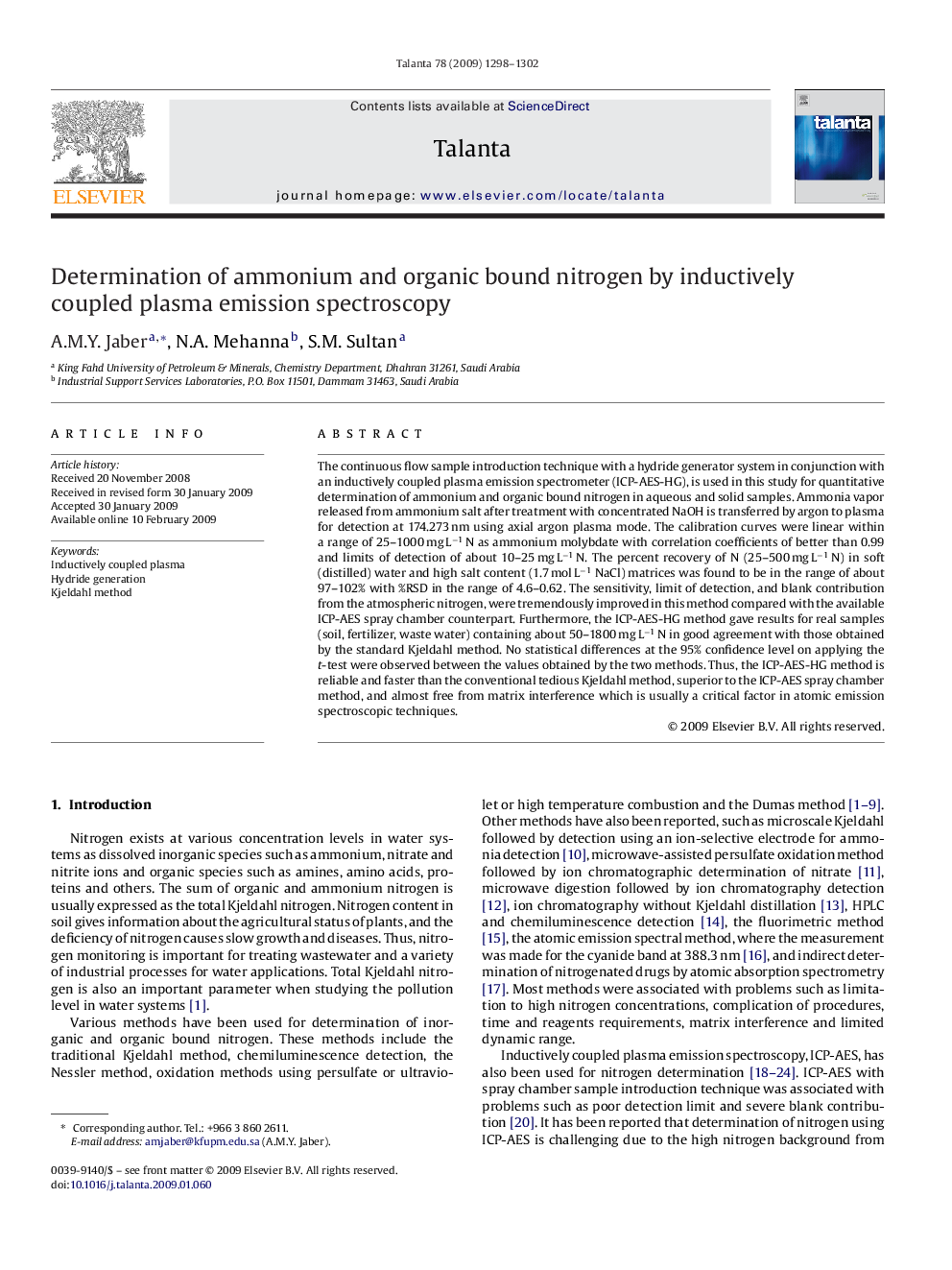| Article ID | Journal | Published Year | Pages | File Type |
|---|---|---|---|---|
| 1246873 | Talanta | 2009 | 5 Pages |
The continuous flow sample introduction technique with a hydride generator system in conjunction with an inductively coupled plasma emission spectrometer (ICP-AES-HG), is used in this study for quantitative determination of ammonium and organic bound nitrogen in aqueous and solid samples. Ammonia vapor released from ammonium salt after treatment with concentrated NaOH is transferred by argon to plasma for detection at 174.273 nm using axial argon plasma mode. The calibration curves were linear within a range of 25–1000 mg L−1 N as ammonium molybdate with correlation coefficients of better than 0.99 and limits of detection of about 10–25 mg L−1 N. The percent recovery of N (25–500 mg L−1 N) in soft (distilled) water and high salt content (1.7 mol L−1 NaCl) matrices was found to be in the range of about 97–102% with %RSD in the range of 4.6–0.62. The sensitivity, limit of detection, and blank contribution from the atmospheric nitrogen, were tremendously improved in this method compared with the available ICP-AES spray chamber counterpart. Furthermore, the ICP-AES-HG method gave results for real samples (soil, fertilizer, waste water) containing about 50–1800 mg L−1 N in good agreement with those obtained by the standard Kjeldahl method. No statistical differences at the 95% confidence level on applying the t-test were observed between the values obtained by the two methods. Thus, the ICP-AES-HG method is reliable and faster than the conventional tedious Kjeldahl method, superior to the ICP-AES spray chamber method, and almost free from matrix interference which is usually a critical factor in atomic emission spectroscopic techniques.
